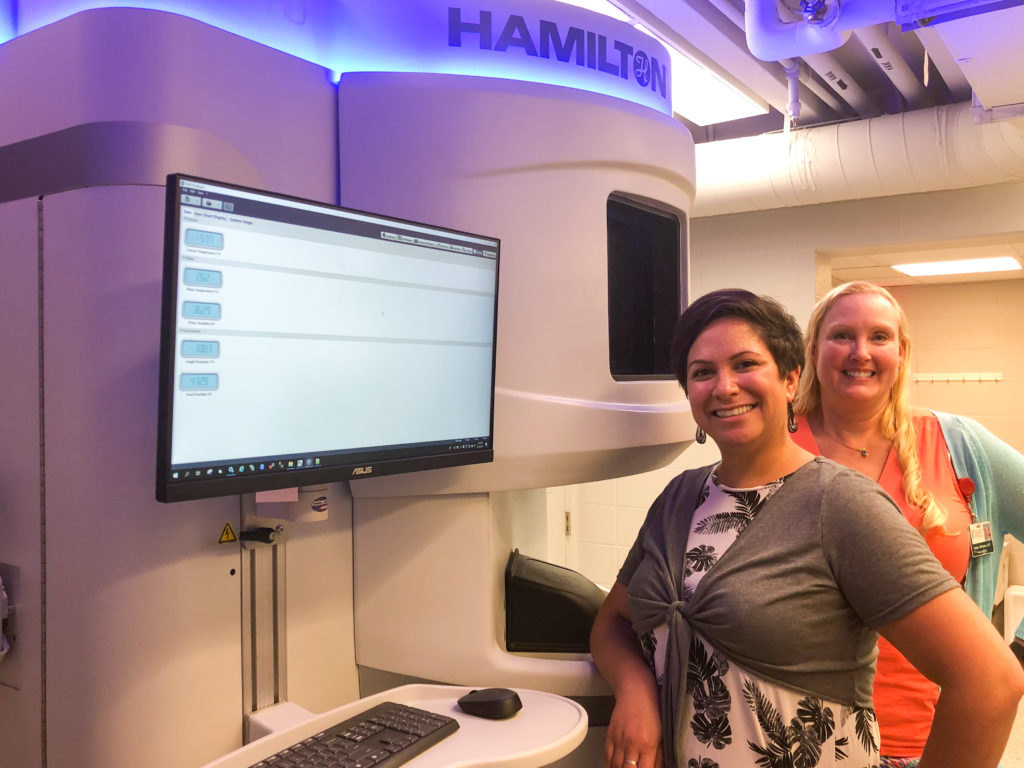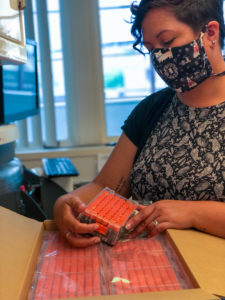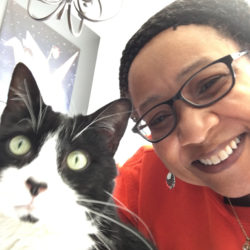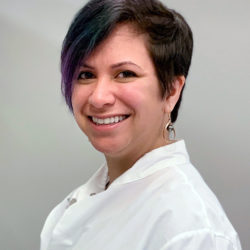Banking on Quality and Care
August 18, 2021 - 8 minutes readAbout a year ago, the Dog Aging Project and the Cornell Veterinary Biobank were jointly awarded a grant from the National Institute on Aging (NIA), a division of the National Institutes of Health, to build and launch the Dog Aging Project Biobank. The NIA selected Cornell for the four-year grant due in part to the biobank’s International Organization for Standardization (ISO) accreditation. The Cornell Veterinary Biobank is the first to meet ISO’s rigorous international standard for biobanks, and offers a complete range of services, including sample collection, acquisition, preparation, preservation, testing, analysis, storage, and distribution.
Housed in state-of-the-art facilities at the Cornell University College of Veterinary Medicine, the biobank has a goal to facilitate and enhance research into diseases that impact both human and animal populations, leading to improvements in the health and well-being of people, animals, and ecosystems.

Biobanking Dog Aging Project Samples
The biobank has recently started receiving biological samples from the Dog Aging Project’s Precision Cohort, a group of Pack members invited for a more precise look at how canine biology and physiology are related to aging.
Processing the samples mainly involves the following standard operations:
Accessioning
Participants and their samples are registered into the Biobanking Information Management System (BIMS). The information is de-indentified to protect the privacy of the owners, and the animals are given unique IDs. Samples are labeled with barcodes and other necessary information to ensure traceability.
Processing
The Laboratory team meticulously processes the collected samples. After being subjected to rigorous quality control, the samples are annotated with the proper documentation for archiving. Part of the sample is aliquoted, or portioned out, into small cryotubes to be directly placed into storage. DNA is extracted from the remainder of the blood samples, to be used for sequencing later.
Storage
All samples are stored in a special freezer nicknamed “Sam-UL (pronounced Samuel) Jackson” until the biobank receives withdrawal requests from researchers. Sam-UL is an automated sample management system — Hamilton SAM HD — made by Hamilton Company for secure storage of tubes and plates down to -80°C (-112°F). The UL in the nickname stands for “ultra-low”. The technology behind Sam-UL will help preserve the quality and improve traceability of the stored Dog Aging Project samples and its associated data.
Distribution of Samples
As part of our commitment to open data, the biobank welcomes withdrawal requests by researchers worldwide. All requests are evaluated by an Ancillary Study and Biospecimen Use Committee to avoid conflicts of interest and ensure ethical use in the research projects. Once approved, the biobank team withdraws the samples from storage and processes them, as needed. Material certificates are created to provide the researchers with all the pertinent information related to the samples.

Dr. Lara Mouttham, Laboratory Coordinator inspects the tubes that will be used to store DAP samples.
“We’re building the Dog Aging Project Biobank not only on the foundation that the Cornell Veterinary Biobank has been laying down for the past 15 years, but also on the cumulative experience of the international biobanking community. We are always improving our procedures and methods to ensure the highest quality of samples for research”, says Dr. Lara Mouttham, Laboratory Coordinator of the Cornell Veterinary Biobank.
Quality Assured
The quality of the samples is dependent on numerous factors throughout its life cycle, from collection to final utilization. The Dog Aging Project Biobank at Cornell helps minimize risk factors and improve the traceability, authenticity, and fitness-for-purpose by providing reliable services for the collection/acquisition, transport, processing, storage, and distribution of this high-quality samples and associated data, in compliance with standardized practices and an implemented quality management system (QMS).
“As part of the biobank’s accreditation, we have an established QMS based on controlled standard operating procedures (SOPs) to ensure consistency, authenticity and traceability of the stored samples and their related data, along with validation of the processes, thereby providing our clients with the assurance that they are receiving fit-for-purpose products and services”, states Dr. Reba Herndon, Quality Assurance Manager of the Dog Aging Project Biobank.
Preserving a Legacy
Banked samples are not only an invaluable resource to science but can also provide pet owners with a source of comfort. Many times, owners make these meaningful contributions as a way to preserve their dog’s legacy or to cope with their animal’s illness. The biobank team understands this and are committed to honoring each participant’s legacy by creating a “culture of quality”, where ethical and collaborative behavior are second nature. The team constantly strives toward continuous improvement for all biobanking processes. Nothing is taken for granted.
The Dog Aging Project Biobank is also dedicated to increasing the usability of all samples and delivering their fullest potential to aid in the advancement of medical research and life saving therapies.
“All of the samples we’re banking could be potentiated into future projects, allowing for new hypotheses to be tested as new research tools become available,” states Dr. Marta Castelhano, director of the Cornell Veterinary Biobank. In this way, we are partnering together with Dog Aging Project participants to create a healthier future for dogs — and their Humans!

Reba Herndon, PhD. MS

Lara Mouttham, PhD